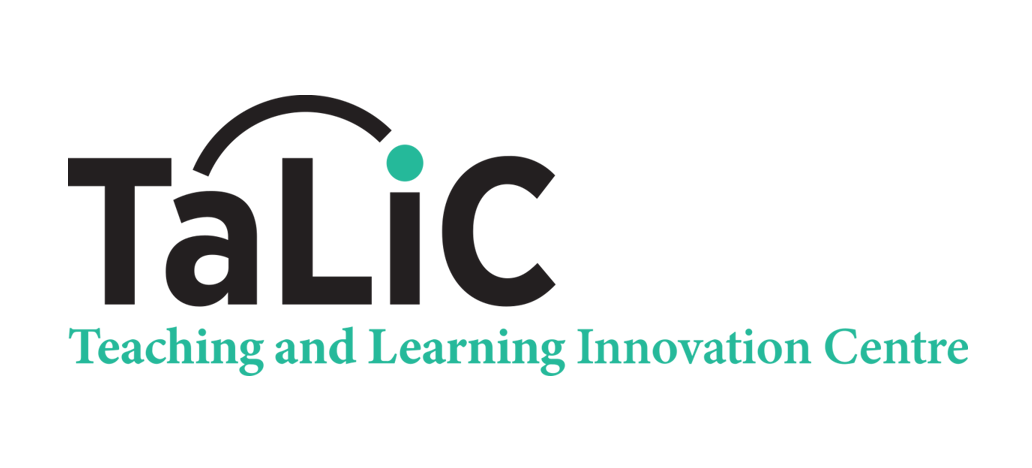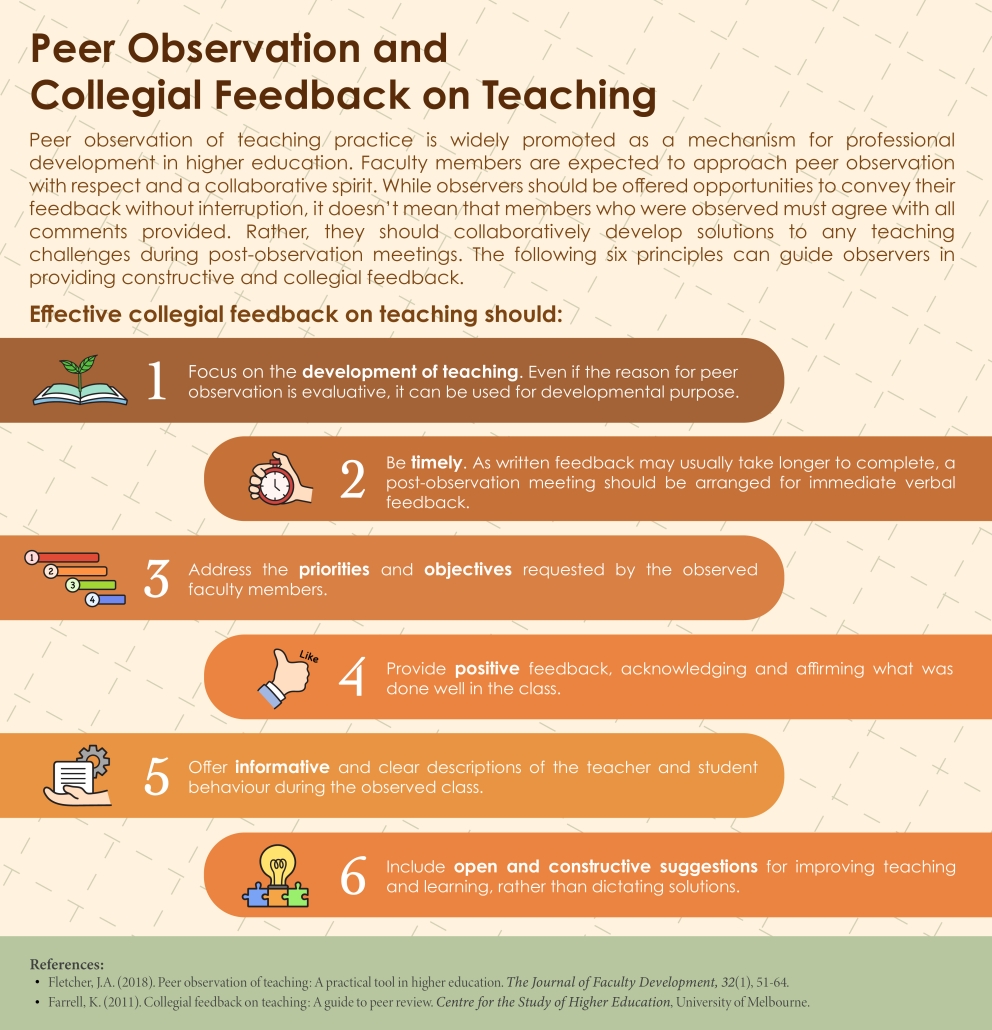Observation of the class provides an opportunity for the reviewer(s) to see the reviewee’s teaching in action and observe its impact on student learning. What the reviewer(s) observe in class will serve as evidence to support the conclusion they draw about the reviewee’s teaching. Thus, it is important for the reviewer(s) to pay close attention to everything happening in the classroom, including what the teacher is doing and what the students are doing, to ensure validity of their evaluation of teaching.
It is advisable for the reviewer(s) to sit at the back of the room so that they can have a good view of the whole class. The reviewer(s) should refrain from asking or answering questions, and from participating in in-class activities and discussions. However, they may listen in on students’ conversations during group work to get a sense of whether students know what they are doing. As the reviewer(s) observe a class, they should take notes to record their observation in relation to the criteria listed in the peer review form.
GOOD PRACTICE IN SUMMATIVE PEER REVIEW OF TEACHING
Here are some good practices in summative peer review of teaching for reviewers:
Effective summative peer review of teaching contains four steps:
Step 1. Pre-observation meeting
Step 2. Observation of a teaching session
Step 3. Post-observation meeting
Step 4. Reporting
This guideline draws on the Manual for Peer Reviewers used by the Li Ka Shing Faculty of Medicine and course materials from the Indiana University Peer Review of Teaching Certificate Course.





